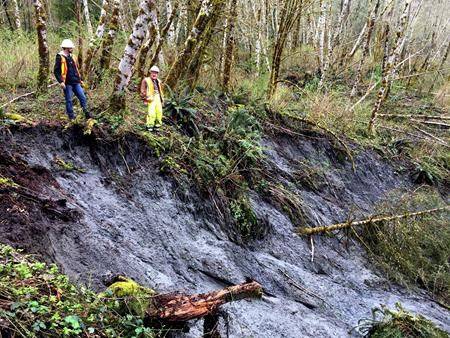The Associated Press
OSO — A slow-moving landslide near the site of a mudslide that wiped out a neighbourhood and killed 43 people in 2014 has prompted officials to close a state highway as a precaution and recommend evacuations for a handful of residents, officials said.
The area of the slide near the tiny community of Oso about an hour’s drive north of Seattle was being tracked by geologists Monday for ground movement. Residents of about a dozen homes were recommended by authorities to evacuate.
Landslides are common in rainy Washington state, and there have been an unusually high number of them recently following months of wet weather, said Joe Smillie, a spokesman with the state Department of Natural Resources.
Heavy recent rains probably contributed to the ground movement, authorities said. It happened in an area with a history of slides going back hundreds if not thousands of years, he said.
The location is about 1.5 miles away from the site of the March 22, 2014, mudslide that was the deadliest in U.S. history, killing 43 people.
About 270 million cubic feet of earth slid down across the Stillaguamish River, spreading out for more than half a mile.
A portion of state Highway 530 was buried under as much as 20 feet of muck and was closed for more than two months. It’s the same highway that authorities have shut down through Thursday.
The slope where the current slide is located moved about 4 feet last week between Tuesday and Saturday but has not moved since then, Smillie said.
“If the entire 24-acre slide were to give way, it could completely cover Highway 530,” the agency said in a statement Sunday. “There’s still a heightened risk that this slide could still move.”
No injuries or damage to private property has been reported, but road damage included cracks of 6 inches last Tuesday that grew to 2 feet by the weekend.
Authorities do not know whether the logging near it played a role in causing the ground movement.
The 2014 slide happened after several weeks of heavy rains, destroying a neighborhood of nearly 50 single-family homes.
A team of scientists said intense rainfall likely played a major role, but no clear cause was determined. Others factors included groundwater seeping into the slide’s mass plus changes in slope and soil weakened by previous landslides.
Smillie said there have been about 100 landslides in northwestern Washington over the past month as heavy mountain snowpack melted.

